Les 24 Chevaliers Part XIX: Koichi Hatsumi (Episode Director)
Beside the chief director, each episode in a TV series is entrusted to the so-called episode directors, who often are also in charge for the storyboards of the episodes they directs. This is the case of Koichi Hatsumi, who after a career as animator, debuted as episode director in Le Chevalier D'Eon episode 3, and further directed episodes 11 and 22. He talked with us about his experience in this XIX part of Les 24 Chevaliers.
Part XIX
Koichi Hatsumi's In principio erat Verbum: "In Appreciation"
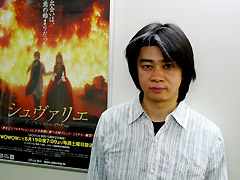 | Koichi Hatsumi Episode director and storyboardist. Hatsumi has worked as animation director for numerous TV series, and Le Chevalier D'Eon is his debut project as an episode director. Past works include: Hakugei: Legend of the Moby Dick (1997, animation director), Cowboy Bebop (1998, key animator), Hunter x Hunter (1999, animation director), Kikaider (2000, animation director), Steamboy (2004, key animator), Tekkonkinkreet (2006, key animator), and Karas (2006, animation director). |
How did you come to work on the Le Chevalier D'Eon project?
I had previously worked in two I.G series, namely Otogi Zoshi as animation director and IGPX as storyboarder, so Producer Nakatake eventually offered me this job. I was mainly working as an animator previously, so it was the first time I was asked to do the storyboards and episode directing. I wanted to challenge something different and decided to take the offer.
Could you tell us about the "episode directing" you were responsible for?
I directed episodes 3, 11 and 22, and for episodes 3 and 11 I also drawn the storyboards. What we did first of all was to have a meeting with Director Furuhashi once the final script came up. He did not give us instructions in full detail before we worked on the storyboards - he would just talk about the rough flow of the storyline. I could say I was allowed much freedom on that. Drawing the storyboard is rather an individual job, but when you step into the next phase, namely the episode directing, it becomes a collaborative work to be carried out through thorough staff meetings. Particularly for episode 3, it was my first time meeting with the staff, so I was especially careful to give out clear instructions to let the animators understand my intentions. As for episode 11, we came to the point we could trust mutually, so I very much left things up to them. (lol)
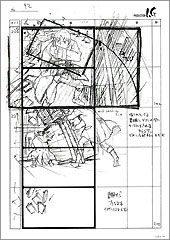
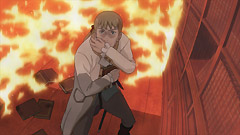
As your first shot at directing, what were the things you took special attention to?
Until now, I mainly drew key frames and worked as animation director, but after a stint at episode directing, I found out that it's such an electrifying and entertaining process. (lol) When I worked as an animator, I could only look at an isolated portion of a longer chain and it was sometimes hard to see the "big picture." Whereas in directing, I could manage to take control of the entire episode and it was a mesmerizing experience. Of course you are required different weight of responsibility. As an animator you are only responsible for the sequence you are allotted, but as a director, you are fully responsible for the entire episode. It was quite challenging to bring out the cohesiveness in the episode where a lot of staff had collectively worked, but it was worth it and I had a lot of fun.
I mustn't forget to mention the help of the staff I often needed as a newbie. I usually imaged the final picture when I drew storyboards, but I was surely surprised and impressed with the finished animation works that exceeded my expectations. I must say that's the most stirring moment as an episode director.
The episodes I was responsible for, especially episode 11, had few action scenes and gave unspectacular impressions, but I strived to use the animation to share characters' feelings with the audience. It was not easy to see how I could do that while I was drawing storyboards. Other than that, in working with the animation staff, I tried to do as much as I could to alleviate the workload for the animation director.
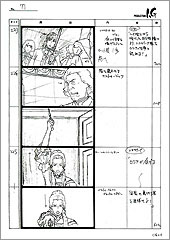
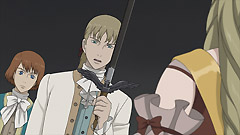
How did you conduct meetings with the staff?
For instance, at a meeting with Director Furuhashi for episode 11, he said, "D'Eon is extremely distressed since he can no longer meet the Tsarina Elizaveta. I wanted to portray the process of his gradual recovery with the support of people surrounding him. I'd like you to pay special attention to that part."
Next, the meeting with animation staff. I worked with Yasutaka Kubota, the animation director. Basically, I asked them to keep to the storyboards and use their own discretion. I also checked the layout arrangement of key arts and made amendments where necessary to reflect my intentions. I added my notes so that Kubota-san would get the idea. As for characters' facial expressions and detailed movements, I trusted Kubota-san's competence 120%, so I left everything up to him. (lol)
Did you discover or gain something new by participating in this project?
Le Chevalier D'Eon is different from ordinary anime works. It is realism-oriented, so it was kind of difficult in many ways. In an action sequence, it would be a sword fight basically, but it can't be like "sport" fencing where you only keep on hitting and striking each other. I added some movements that would stand out on screen, for instance, swinging of the sword and slashing someone.
As for portraying characters, I felt it would be hard for present day audiences to understand the mentality and shared values "to serve the King" that was preeminent among French knights in those days including with D'Eon. I was careful not to push these ideas too much in the portrayal. I tried to introduce the world of the story naturally so that the audience wouldn't feel out of place.
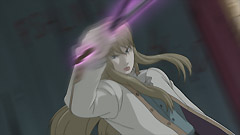
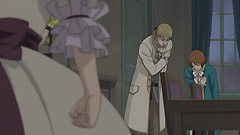
Which character do you like the most?
Caron. He was retaliated against by D'Eon / Lia for the death of Bernis. His stance was against the Royalists, so I think his last wish had been closer to that of the citizens at the time, which later led to the Revolution. I had this empathy toward him while I worked.
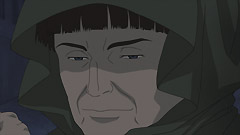
Please leave a message to the audience of Le Chevalier D'Eon.
The story gets ever more thrilling as it approaches to the end. For those who are going to start a long way with D'Eon and his mates, I hope they will stay with the series till the end to see the finale. Many characters meet a dramatic fate, but it is not the end for them, because their comrades assume their wishes. I would like the audience to see that.
© Tow Ubukata · Production I.G/Project Chevalier 2006

![WORK LIST[DETAILS]](/contents/works/design/images/left_title.gif)



 terms of use
terms of use